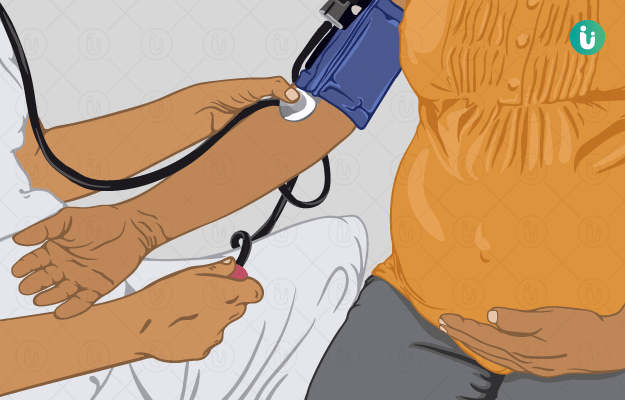Preeclampsia is a complication of pregnancy in which the blood pressure shoots up over 140/90 mm Hg and there is some damage to the expecting mom's internal organs, usually after the 20th week of pregnancy.
This condition usually affects women who have not had blood pressure-related issues before pregnancy. (That said, preeclampsia superimposed on chronic hypertension is included in the World Health Organization's International Classification of Diseases, or ICD 11, as a possible complication under preeclampsia.)
Eclampsia, which affects one in 200 women with preeclampsia, may be experienced where women start to have seizures as a result of the high blood pressure (BP).
Symptoms differ by condition and from one person to another. However, they may broadly include:
- Preeclampsia: Retention of fluid in the body causing weight gain, headaches, altered vision, nausea, abdominal pain during pregnancy and lower urine output.
- Eclampsia: Seizures, swelling on the face and hands, blurred vision, disorientation, moments of failed vision, and loss of consciousness.
The exact cause of preeclampsia is hard to pinpoint. However, doctors say that lack of blood flow or less blood flow to the uterus, or some genetic causes may contribute to the condition. In the case of preeclampsia, doctors have often found abnormalities in the placenta and elevated protein levels in the urine along with hypertension or high BP.
In diagnosing preeclampsia and eclampsia, doctors first check blood pressure levels and monitor them over some time. They may take some blood samples to check for blood count, platelets for clotting time, and kidney and liver function as well. Also, urine protein levels may be examined and creatinine checks may be conducted.
The ideal treatment for eclampsia and preeclampsia is to have the baby delivered, although this depends on the development of the baby and the condition of the mother as well. In cases where the condition is mild, doctors may suggest bed rest, a medication for blood pressure and regular blood tests.
In certain complicated cases, doctors may even recommend that the pregnant woman get admitted in a hospital. If the individual has eclampsia, doctors may also prescribe anticonvulsants to prevent seizures.
It is expected that all signs of preeclampsia or eclampsia go away within six weeks of delivery.

 Doctors for Preeclampsia and Eclampsia
Doctors for Preeclampsia and Eclampsia  OTC Medicines for Preeclampsia and Eclampsia
OTC Medicines for Preeclampsia and Eclampsia






































